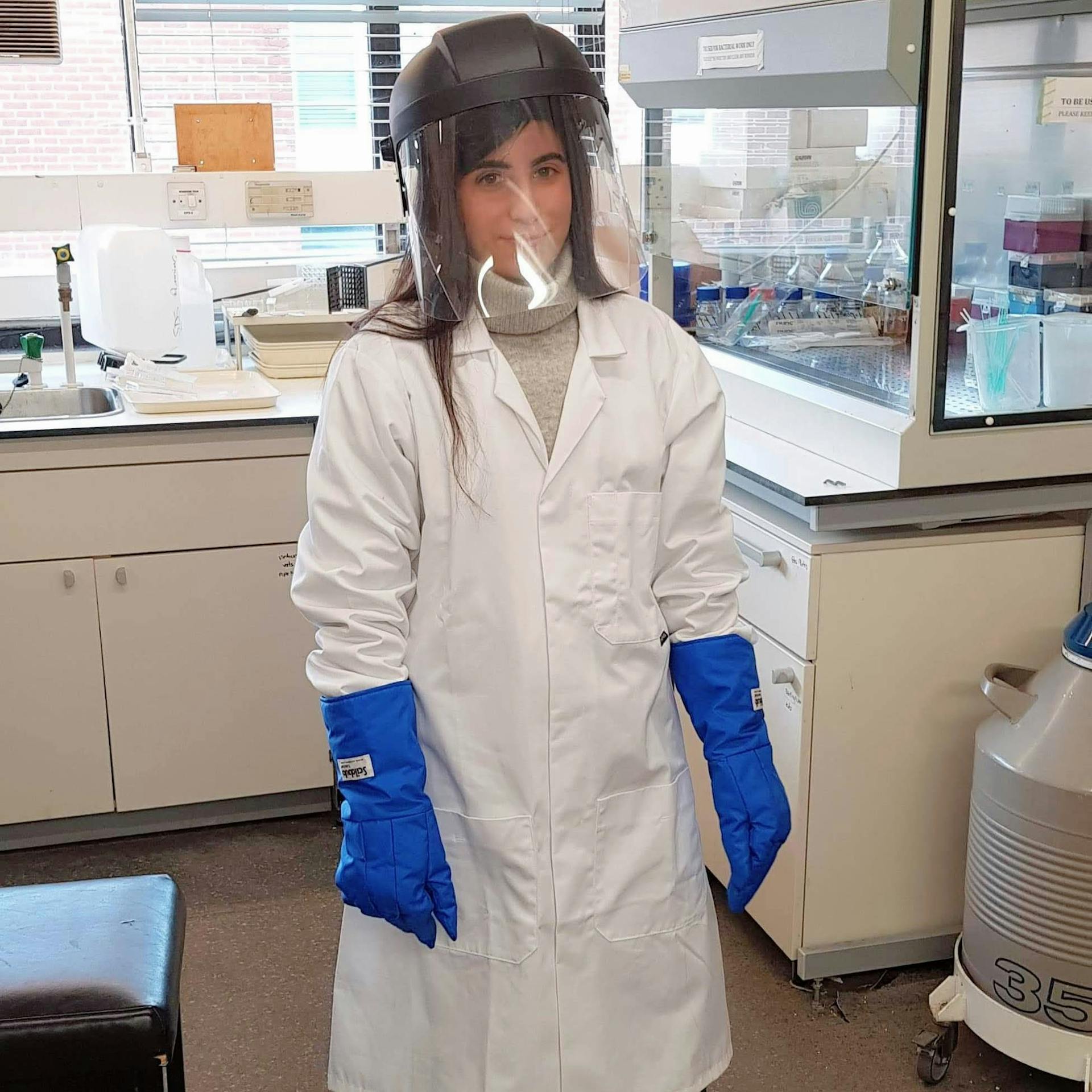✍️ Author: Dr Eleni Christoforidou
Home
What I looked like with all the PPE for using liquid nitrogen.
A Day in the Lab: Safely Handling Liquid Nitrogen
🕒 Approximate reading time: 2 minutes
Today's lab chronicles revolved around a chilling task - using liquid nitrogen to snap-freeze brain tissue at a brisk -196°C for long-term preservation. Dealing with liquid nitrogen required me to don appropriate Personal Protective Equipment (PPE), as showcased in the picture below.

PPE for liquid nitrogen usage includes cold-insulating gloves, a lab coat, non-porous closed-toe shoes, and a face shield specifically designed to guard against liquid droplets and gas. Liquid nitrogen contact with the skin can lead to severe cryogenic burns, akin to frostbite. Furthermore, liquid nitrogen should be avoided in confined and inadequately ventilated spaces because it could displace oxygen and create a suffocating environment.
An important safety note: improperly stored samples in liquid nitrogen can result in EXPLOSIONS! While I have been fortunate not to experience this personally, I was once in proximity to another scientist who had just retrieved a small tube from a liquid nitrogen tank when it suddenly exploded in his hand, causing him temporary hearing loss. This incident was likely due to trapped liquid nitrogen in the tightly sealed tube. Hence, one should never fully seal a container holding liquid nitrogen! Conversely, leaving a container with liquid nitrogen uncovered is also risky. This is because oxygen's boiling point is higher than that of nitrogen, allowing oxygen to condense from the air into the liquid nitrogen. This process converts oxygen gas from the air into liquid oxygen, which can accumulate to levels potentially causing violent and highly explosive reactions with organic materials, even normally non-flammable ones.
Liquid nitrogen is a potent tool in laboratory research, especially for preserving samples. However, safe handling is critical to prevent injuries and accidents. Always remember: proper protection, ventilation, and careful storage are the keys to working safely with liquid nitrogen.